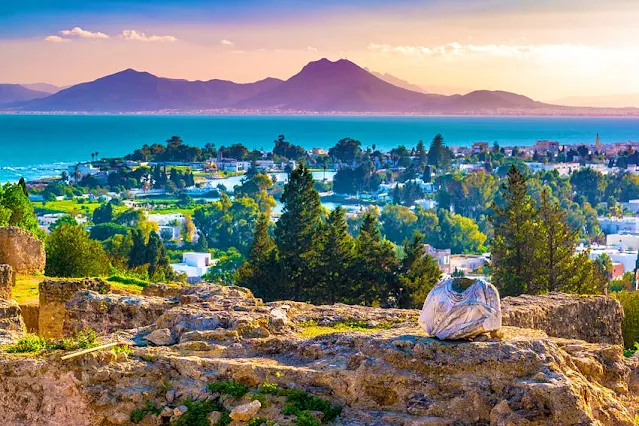Carthage
The city of Carthage was founded in the year 814 BC, and it was founded by the Phoenician Princess Didon.
This city was named after Qart Hadasht, and this name means the new city, because of the Latin pronunciation of it, this name has changed to become Carthage with time.
The area of the city of Carthage is estimated at about 1.5 km², and its population is estimated at approximately 16 thousand people.
Where is Carthage located?
The city of Carthage is located in the Republic of Tunisia, very close to the city of Tunis, about 15 km away, as it is located on the eastern coast of Tunisia overlooking the Mediterranean Sea.
This city extends on the coast of the Mediterranean Sea, a distance of approximately 3 km.
To the east of it is the Mediterranean Sea, to the north, there is Sidi Bou Said, to the west of it is the marina, and to the south of it there is Al Karam.
A Brief History of Carthage
Throughout its long and extended history, Carthage has been under the control of many different civilizations. Carthage was under the control of the Romans, and Carthage entered Christianity in the year 312 AD, at the hands of Constantine I.
Carthage was also attacked by the Vandals, then Byzantium took control of it, and after the Muslims came, Carthage became an Islamic city under the control of Muslims.
Monuments in Carthage
Carthage contains many monuments, including the Carthage Museum, which is located on the plateau known as the Bersa Plateau, this museum was established in the year 1875 AD.
Also, besides the museum, there is the Punic Quarter, which is affiliated with the Museum, but it is open to the open air. This neighborhood contains houses, shops, and streets.
This neighborhood was subjected to bloodshed and burning in the year 146 BC, but it was able to preserve itself, as it was covered with a layer of dirt over the past long period.
In Carthage, there are also the Baths of Antoninus, the third largest in the whole world, preceded only by the Italian Baths of Caracalla and the Syrian Baths of Diocletian.
These baths were subjected to vandalism and destruction during the Vandal conquest of the city, and they also remained to preserve themselves from complete extinction as they were covered with dirt throughout the successive centuries.
Other monuments found in Carthage include the neighborhood of Roman houses, in addition to the Odeon, the theater, the Damos church, the hanging cisterns, the amphitheater, the Mavon neighborhood, the Christian Museum, the circular landmark, the Punic ports, and the Tomb of the Tomb.
A very famous annual music festival is held in the Tunisian city of Carthage in July and August every year.

